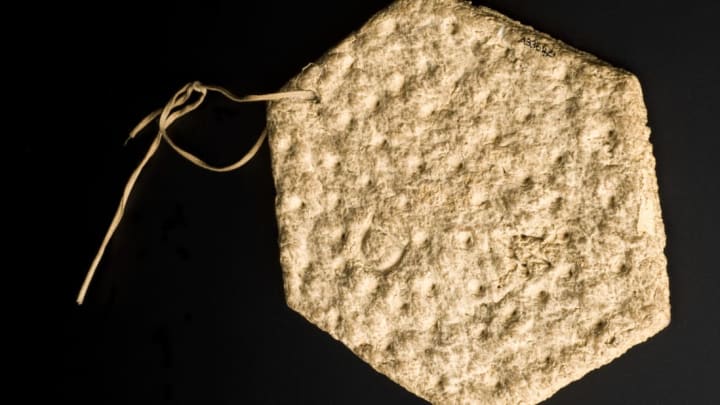They're virtually tasteless and low in nutrients, but ship's biscuits have kept countless sailors and explorers alive. To celebrate National Biscuit Day, Royal Museums Greenwich in London is offering its recipe for making your own indestructible crackers.
Mass-produced for Britain's Royal Navy beginning in the 17th century, ship's biscuits, a.k.a. hard tack, were a non-perishable, carb-rich food source. They allowed ships to sail for ever-longer distances without needing to replenish provisions. Ship's biscuits made up most of a sailor's diet, along with salted or smoked meat. (No wonder scurvy was such a problem.) By the mid-1800s, canned foods were added to ships' pantries, but the biscuits remained a staple. Antarctic explorers like Robert Falcon Scott and Ernest Shackleton in the 20th century were still serving their men "hoosh"—a stew of pemmican, penguin or seal meat, and dissolved ship's biscuit.
Despite their importance to maritime exploration, the biscuits were barely palatable. They became infested with weevils and maggots. They had to be softened in tea or beer before being chewed. They were so hard that sailors could scratch love notes to sweethearts back home on them.
The Royal Museums Greenwich recipe calls for just three ingredients: whole wheat flour, water, and salt. Combine the flour and salt, and then add the water to create a very stiff dough. Roll the dough out to a half-inch thickness, cut with a biscuit cutter into circles, and stab each circle with a fork a few times to let steam escape as they bake. Thirty minutes in the oven and voilà—a slightly chewier version of the cracker that changed the world.
Get the full recipe here.
[h/t Royal Museums Greenwich]
